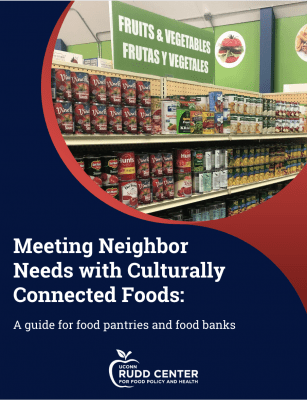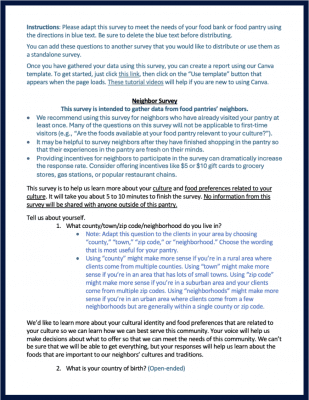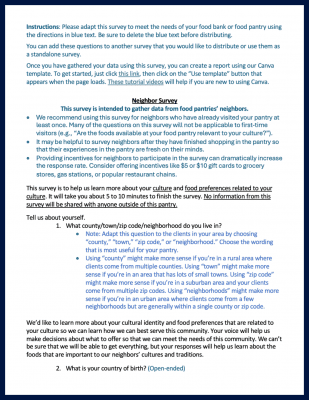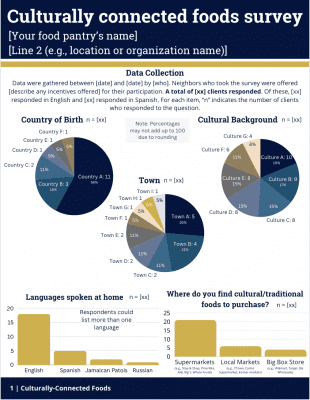Cultural Food Guide
Historically, the main goal of the charitable food system was to limit food waste by moving food into the hands of people who need it. Success was primarily measured by the number of pounds distributed and the number of people served.
Over the past decade, however, many in the fields of public health, anti-hunger advocacy, and food banking have shifted away from a narrow focus on the quantity of foods distributed to a broader focus on the needs of the individuals who are served by this system. New considerations include attending to the nutritional quality of the foods distributed; allowing neighbors to choose their food with dignity while shopping in a pantry; and meeting the cultural needs of specific communities.
In response to these considerations, the Rudd Center has released a new guide titled "Meeting Neighbor Needs with Culturally Connected Foods." The aim of this guide is to provide food banks and food pantries with ideas to help meet the cultural needs of neighbors within the charitable food system.
Additionally, we have drafted an array of questions in two editable surveys - one for pantry volunteers and staff, and another for neighbors. We encourage food banks and pantries to select the most applicable questions and use a survey to learn more about community needs. We also have created a Canva template to help communicate the survey results.
For your convenience, the editable surveys for volunteers/staff and neighbors are also available in Spanish.
Suggested citation: Schwartz, Marlene; Caspi, Caitlin; Gombi-Vaca, Maria; McKee, Sarah, Villalba, Joel. Meeting Neighbors Need with Culturally Connected Foods: A guide for food pantries and food banks. Rudd Center for Food Policy and Health. University of Connecticut. 2024



